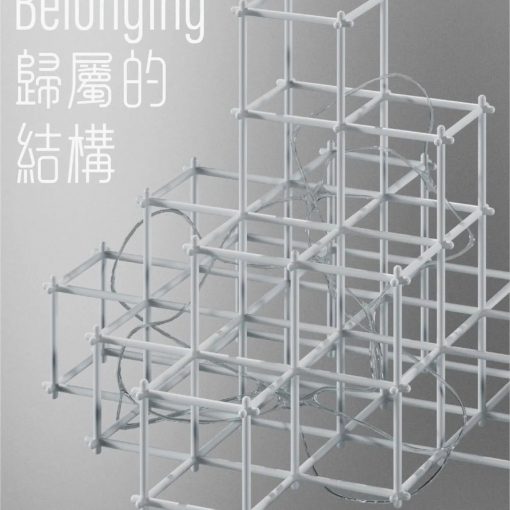这可能是艺术史上最痛的一块石头。
它是一位无声悲恸的父亲,哑然地微张着嘴,双眼因烈焰失明,头脑已焦虑到疯狂;它是他两个年幼的儿子,正徒劳地挣扎着,向着近在咫尺的父亲求救。可紧紧缠住父子三人的,是女神雅典娜派来的海蛇……

《拉奥孔》又名《拉奥孔和他的儿子们》(The Laocoon and his Sons),是公元前一世纪中叶古希腊作品,由罗得岛雕塑家阿格桑德罗斯(Agesandros)和他的儿子波利多罗斯(Polydoros)、阿典诺多罗斯(Athanodoros)父子三人共同创作。现藏于位于梵蒂冈的梵蒂冈美术馆。 ©wikimedia
Named “Laocoon” or “Laocoon and his Sons,” this ancient Greek masterpiece from the mid-1st century BCE was jointly created by the sculptors Agesander, Polydorus, and Athenodorus from Rhodes. It is now housed in the Vatican Museums, Vatican City. ©wikimedia
这块石头生动再现了荷马史诗中传说中的一段情节——持续了十年的特洛伊战争中,特洛伊城的大祭司拉奥孔及其幼子安提法斯 (Antiphas) 和蒂姆布雷乌斯 (Thymbraeus) 遭遇悲惨厄运。
当希腊的预言家们设计的木马被特洛伊人欢呼着拖向即将拆毁的城门,特洛伊城的先知者拉奥孔预见了巨大的灾难。为向特洛伊人证明木马有诈,拉奥孔以长矛刺向这不祥的献礼,却引来智慧女神雅典娜的雷霆震怒,一阵地动山摇之后,被烧瞎双眼的拉奥孔仍在劝说特洛伊人焚毁木马 ,被看破诡计的雅典娜派出海蛇扑向拉奥孔的两个儿子,安提法斯和蒂姆布雷乌斯顷刻间丧命于巨蛇……
看到这来自天神的惩罚,却使特洛伊人更加坚信木马是用于献祭的圣物。
这块石头刻下了一个先知者最为悲剧的命运,神迹面前,一切凡人的洞察、抗争,都像是枉然。这位已被众神抛弃的瞎眼祭司,阻止不了特洛伊城的沦陷,也无力拯救注定被牺牲的任何人。
这块石头还刻下了一位父亲最痛的时刻,也在艺术的层面上探讨了人性情感的极限。古希腊人认为,遭受痛苦的人有发泄的权力,让痛苦和哀伤表现出来,不应被视作人性之耻。这父子三位艺术家,怀着极大的同情和智慧,刻出了「悲剧的高贵,无声的哀叹」,为这块苦痛中的石头注入了不同寻常的灵魂。
莱辛在经典著作《拉奥孔:论绘画与诗歌的局限性》中说,他认为艺术家不可能实实在在地描绘牺牲者肉体上的苦难,因为这过于痛苦。
过于痛苦。

(中文译本:《拉奥孔》,朱光潜/译)
《拉奥孔》一书中,莱辛比较了关于这段悲剧的两个不同说法,一说巨蛇也叫「食孩蛇」,只杀死了拉奥孔的两个孩子;一说正如这组大理石群像所示,巨蛇杀死了父子三人。
这两种说法大概都是对的吧。
当两名幼子接连在身边死去同时,这位父亲也许已经在某种意义上死去了……

齐齐哈尔三十四中,体育馆事故发生后,人们为11位遇难师生献上的鲜花与排球 ©澎湃新闻
近日新闻中,一位厄运中的父亲总不免让我想起这块无声的石头,在心灵遭受极致悲痛时,他仍表现出惊人的自尊与自制,那是种融入血液的善良与智慧、骨子里的精神与力量,在惊涛骇浪前支撑着自己,也感召着众人,我们要相互帮助,我们应相互守望。

曾梵志《拉奥孔》布面油画,400 x 400 cm,2015 ©曾梵志工作室
曾梵志创作的名为《拉奥孔》的同名油画,在他的作品中,我们看到了他对这场古老悲剧的现代诠释。这幅画捕捉到了失落和绝望的原始情绪,与雕刻在古老石头上的痛苦相呼应。
Zeng Fanzhi’s oil painting “Laocoon,” measuring 400 x 400 cm and created in 2015, © Zeng Fanzhi Studio.
In his artwork titled “Laocoon,” Zeng Fanzhi offers a modern interpretation of this ancient tragedy. The painting captures the primal emotions of loss and despair, resonating with the anguish carved into ancient stone.
This might be the most painful stone in art history.
It portrays a speechless and grieving father, his mouth slightly open, his eyes blinded by the flames, and his mind overwhelmed with anxiety. Beside him, his two young sons struggle helplessly, seeking their father’s rescue. However, they are tightly entangled by the sea serpents sent by the goddess Athena…
This stone vividly depicts a scene from the legendary Trojan War described in Homer’s epic. During the ten-year-long war, the high priest of Troy, Laocoon, and his young sons, Antiphas and Thymbraeus, faced a tragic fate.
As the Greeks’ deceitful wooden horse was being hailed by the Trojans towards the doomed city gates, Laocoon, foreseeing a great disaster, attempted to prove its treachery by thrusting his spear into the ominous offering. However, this act invoked the wrath of the wise goddess Athena, and after a violent earthquake, the blinded Laocoon continued urging the Trojans to burn the wooden horse. But Athena’s serpent sent the momentary death of Laocoon’s sons, Antiphas and Thymbraeus…
Witnessing this divine punishment only strengthened the Trojans’ belief in the sanctity of the wooden horse, which ultimately led to the city’s downfall.
This stone immortalizes the tragic fate of a prophet, where human insight and resistance become futile before divine miracles. Laocoon, abandoned by the gods, couldn’t prevent the fall of Troy nor save anyone destined to be sacrificed.
This stone also captures a father’s most painful moment and explores the limits of human emotions through art. Ancient Greeks believed that those suffering have the right to express their pain and sorrow, as it shouldn’t be seen as a disgrace to human nature. The three artists, father and sons, carved “the nobility of tragedy and the silent lament” with immense empathy and wisdom, infusing this stone of agony with an extraordinary soul.
Lessing, in his classic work “Laocoon: An Essay on the Limits of Painting and Poetry,” argued that artists couldn’t realistically depict the physical sufferings of the victims because it would be too painful.
Too painful.



《拉奥孔》
part
In this book, Lessing compared two different versions of this tragedy—one saying that the sea serpent, also known as “child-eating serpent,” only killed Laocoon’s two sons; the other, represented by this marble group, suggests that the serpent killed all three.
Both versions are perhaps true.
When both young sons died consecutively at his side, this father might have died in a sense too…
Recently in the news, a father in the midst of misfortune also reminds me of this silent stone. Amidst the extreme sorrow in his heart, he still demonstrated astonishing dignity and self-control. It reflects the innate goodness, wisdom, spirit, and strength, supporting himself amidst the tempestuous waves and inspiring others. We should help each other, and we must watch over one another.
除注明外,本文图片均源自网络
Except for the indicated sources, all images in this article are from the internet.





